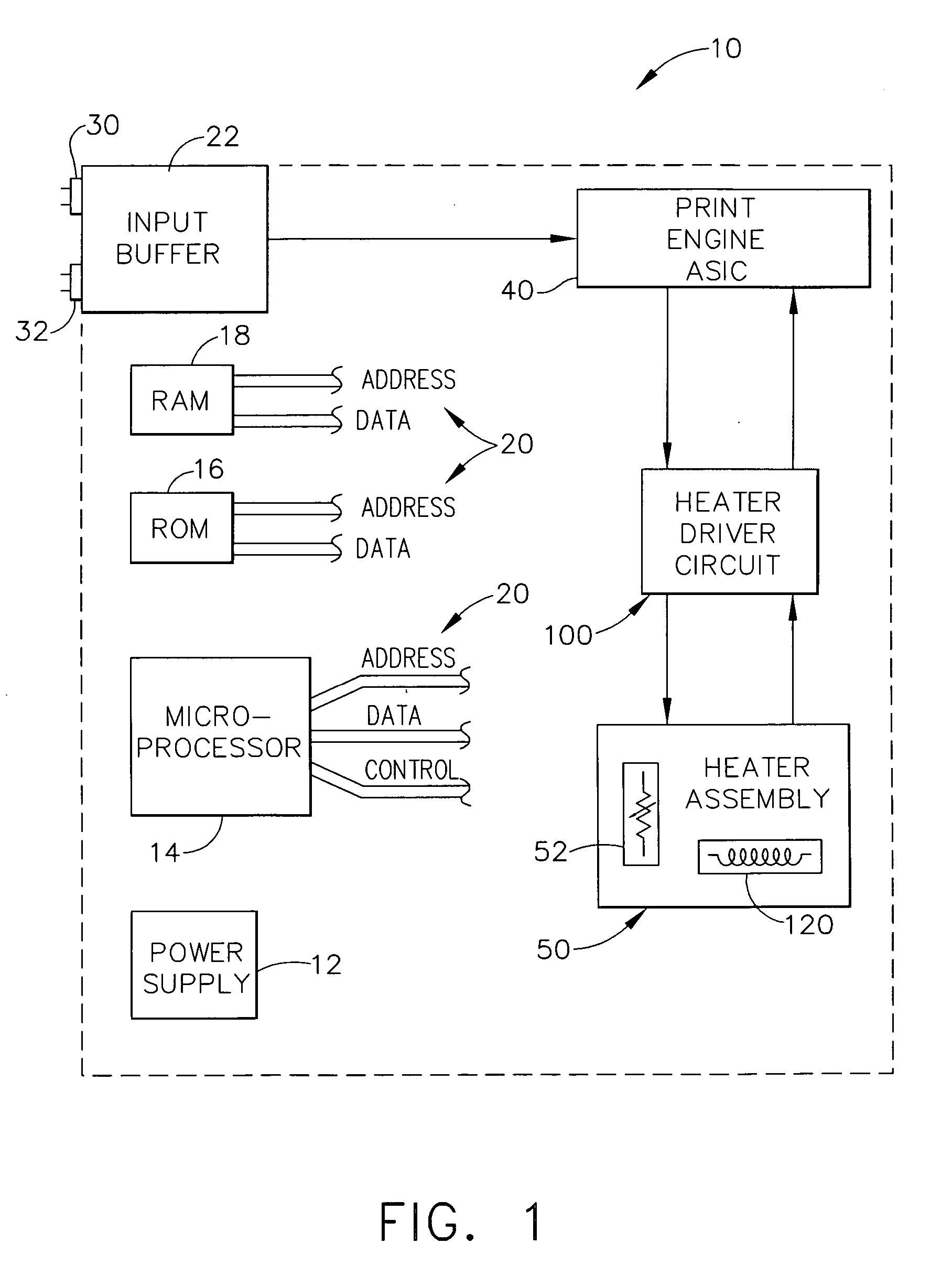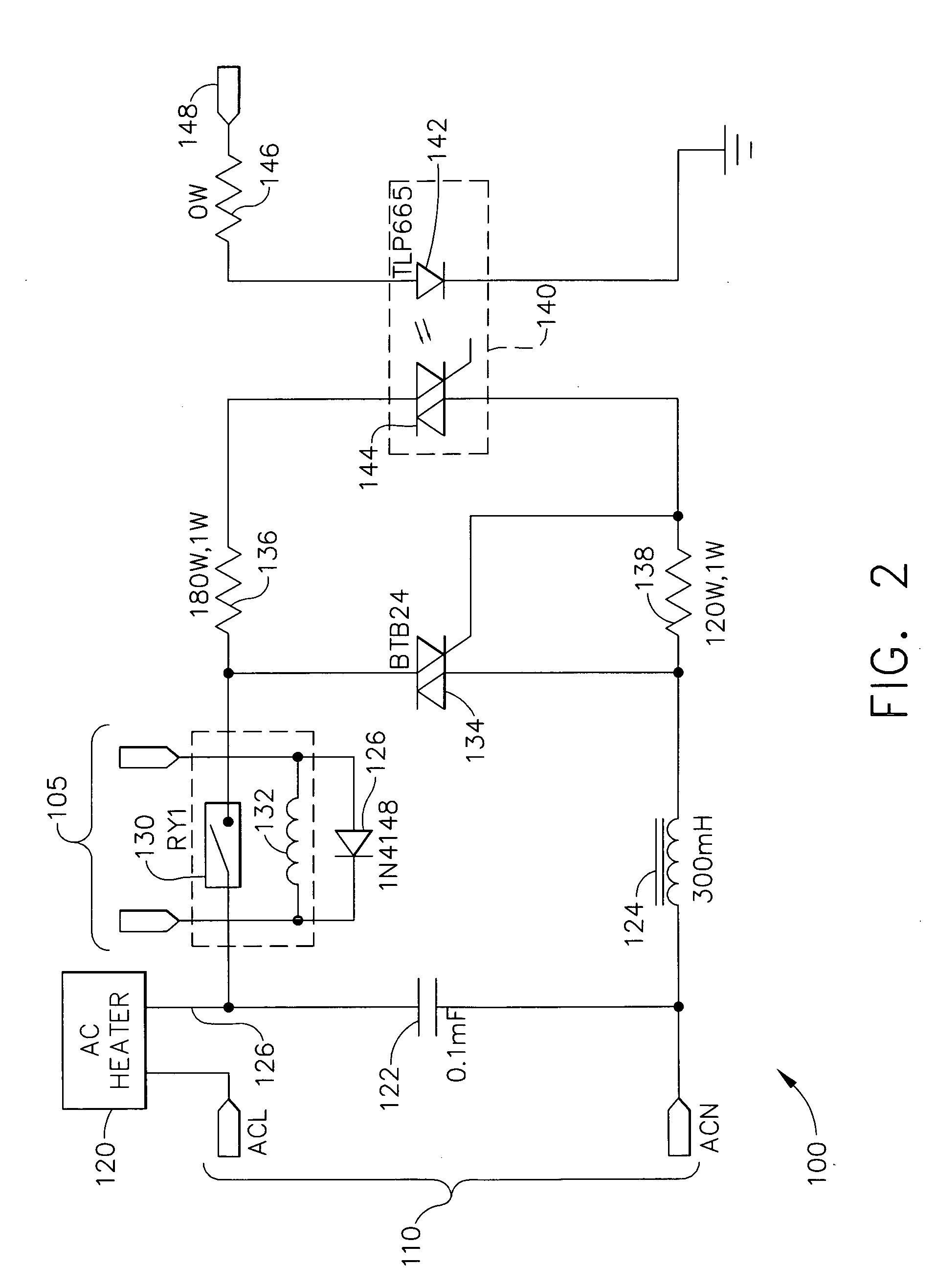Method and apparatus for controlling temperature of a laser printer fuser with faster response time
- Summary
- Abstract
- Description
- Claims
- Application Information
AI Technical Summary
Benefits of technology
Problems solved by technology
Method used
Image
Examples
first embodiment
[0068] Referring now to FIG. 7, a logic block diagram is provided generally designated by the reference numeral 400, which represents a temperature control algorithm usable with the fuser of the present invention. Starting at a block 410, the number of target “clicks” is received from a ramp table, or is a steady state value received from the controller. The term “clicks” refers to a numeric value, typically in the range of zero (0) through 255, for a control system having an 8-bit precision. The number of clicks would be zero (0) for a minimum value and 255 for a maximum value, representing the numeric integer values using this 8-bit precision. If this was translated into voltage levels, the zero (0) level could be represented by zero (0) volts DC, and the numeric click value 255 could be represented by +5 volts DC, for example.
[0069] The target clicks in the temperature control block diagram 400 represent the desired temperature that the fuser assembly 50 is to be set to. This num...
second embodiment
[0073] Referring now to FIG. 8, a logic block diagram is provided generally designated by the reference numeral 500, which represents a temperature control algorithm usable with the fuser of the present invention. Starting at a block 510, a reference temperature (in degrees C.) is received from the control system, which could be a steady state value received from the controller. This reference temperature represents the desired temperature that the fuser assembly 50 is to be set to, and will likely change its numeric value when the printer changes operating modes (e.g., from standby mode to printing mode).
[0074] The reference temperature 510 is directed down an arrow 512 to a difference function 520, in which the actual temperature of the fuser 570 (in degrees C.) is subtracted from the target temperature, resulting in a difference value, which is referred to as the “error” (also in units of degrees C.), at an arrow 522. This difference function 520 is a standard function used by ma...
PUM
 Login to View More
Login to View More Abstract
Description
Claims
Application Information
 Login to View More
Login to View More - R&D
- Intellectual Property
- Life Sciences
- Materials
- Tech Scout
- Unparalleled Data Quality
- Higher Quality Content
- 60% Fewer Hallucinations
Browse by: Latest US Patents, China's latest patents, Technical Efficacy Thesaurus, Application Domain, Technology Topic, Popular Technical Reports.
© 2025 PatSnap. All rights reserved.Legal|Privacy policy|Modern Slavery Act Transparency Statement|Sitemap|About US| Contact US: help@patsnap.com



